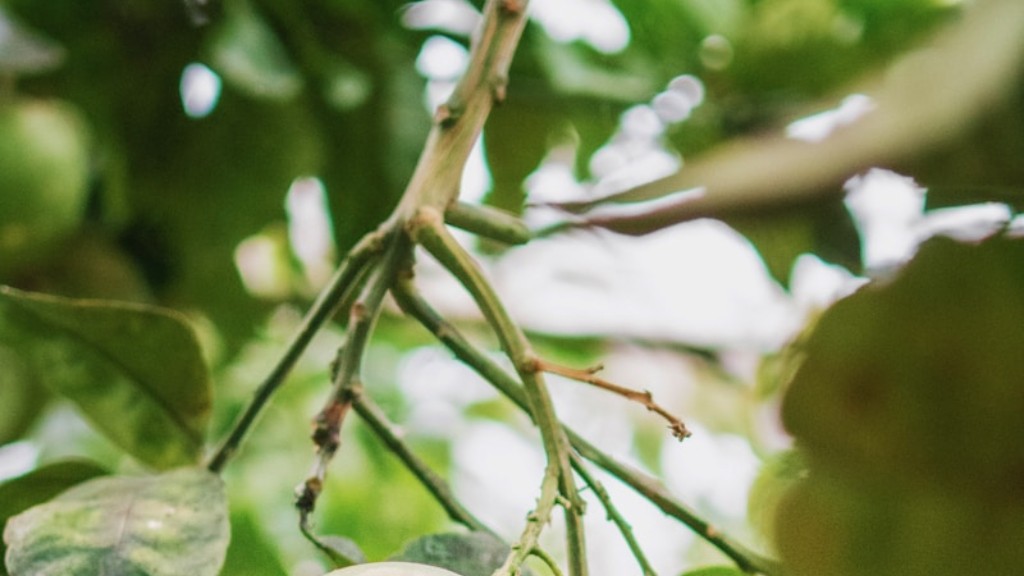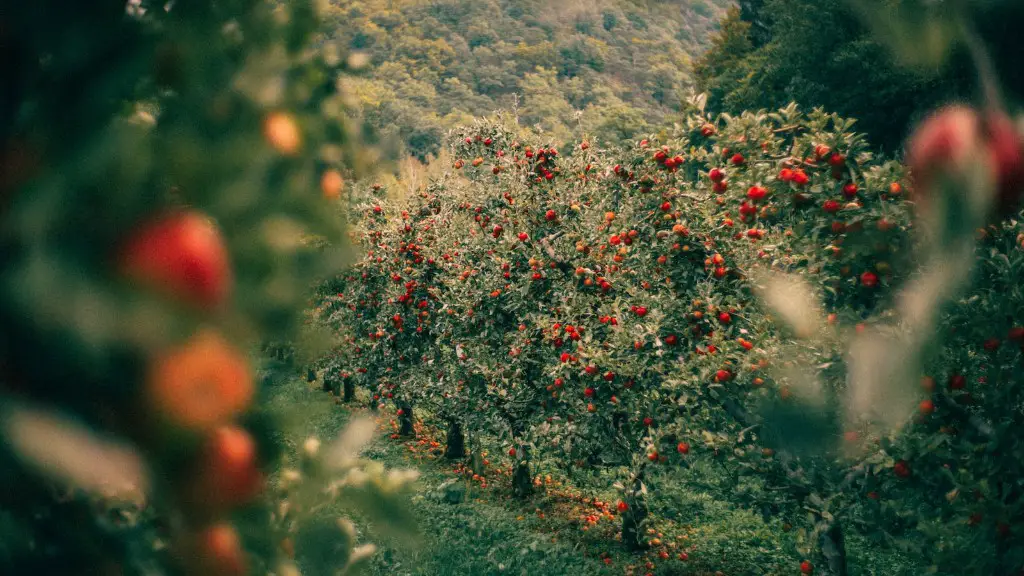Apples are ready to be picked once the color of the apple has fully matured and deepened. If too green, they are not ripe; if too soft, they are overripe and won’t last. To check if an apple is ripe, it should be gently twisted off the tree; if it doesn’t come off easily, it is not ready to be picked. In addition, ripe apples will have a waxy shine to them. Once the fruits are plucked from the tree, they should be netted or placed into containers immediately so that they don’t fall to the ground.
When picking apples, it is important to pick uniformly, evenly and systematically so that sunlight passes through all the leaves, branches and other fruits, allowing for further maturation of the fruits. Gently pull the apple with both hands – it should be slightly firm and even harder if picked from higher branches. Fruits should always be carefully examined for bruises, warp and unripe spots. When placing the apples into containers, they should be handled with care to avoid bruising.
Another factor to consider when picking apples is the climate and season. Different varieties of apples ripen differently, so timing is important when harvesting apples. Generally, most apples are ready to be picked between late August and October. Weather conditions, like extreme heat or cold, can also affect the ripening of apples.
When it comes to keeping apples fresh, they should be stored correctly in the refrigerator to last longer. Apples that are properly stored in moist, cool conditions can last for up to 3 months. On the other hand, apples stored in a warm, dry place can spoil within a month.
Storing Apples
Storing apples correctly will prolong their shelf life and ensure their maximum freshness. To do this, apples should be placed in a cool and dark place, like a refrigerator. They should be kept away from other fruits and vegetables to reduce the risk of cross-contamination. Apples should be stored in the crisper drawer or the vegetable drawer of the refrigerator with other types of fruits. It is also important to use airtight containers so that they are not exposed to air, as this can hasten the ripening process.
When storing apples, you should also avoid exposure to ethylene gas, since this will speed up the ripening process. Ethylene gas is typically emitted by other produce like bananas and tomatoes, or even cosmetics and smoke, which could compromise the freshness of apples. You should also avoid storing apples near acids like vinegar, as this can also cause early ripening.
Apples can also be stored in the refrigerator or a vegetable drawer for up to three months, depending on the variety. If you don’t have a refrigerator, apples can be stored in a cool, dark place, such as a cellar or garage. Store the apples in a cool, dry place away from sources of heat and moisture.
If you do not plan on eating the apples immediately, you can also freeze them for up to a year. Apples can be frozen whole, in slices, chopped or pureed. The key to successful freezing is to make sure that the apples are sealed in an airtight container to prevent freezer burn. It is also important to note that frozen apples will not have the same crunchy texture as fresh apples.
Preparing Apples
Preparing apples for consumption depends on how you intend to use them. If you plan to eat them raw, you should wash them with cold water and gently scrub them to remove any dirt or debris. Apples can also be peeled and cored, either manually or with a handheld device. Both the core and peel can be cooked to soften the apple, or simply discarded.
When making desserts and other baked goods, apples must be cut and diced into small, uniform pieces. To ensure that apples are cut into even pieces, use a sharp knife and place the flat side of the apple down in a cutting board. Cut the apple into two or four parts, then remove the core and peel the apples to remove the skin. You can then cut the apples into slices or cubes, depending on the desired outcome.
Using a mandolin to cut apples is an easy way to get thin, uniform slices. If using a mandolin, ensure that it is made of stainless steel and has adjustable blades, so that you can choose the desired thickness. When slicing apples with a mandolin, use protective gloves and a tray for catchment purposes.
Apples can also be grated or pureed for various recipes. To make apple puree, start by peeling, coring and dicing the apples. Place the apples in a saucepan, cover with water and bring to a boil. Reduce the heat, cover and simmer for about 10 minutes, or until soft. Once the apples have cooled, simply puree them in a food processor or blender until smooth.
Heirloom Apples
Heirloom apples are varieties of apples that were cultivated by farmers hundreds of years ago and have survived generations, making them highly sought after. These apples possess unique, old-fashioned flavors and are often described as juicy and tart. Heirloom apples are typically picked in the late summer to early fall, and require a little extra TLC when it comes to harvesting and storage.
The most popular heirloom apple is the Arkansas Black Apple. This apple has a deep burgundy color and a tart flavor. Another popular heirloom variety is the Stayman Winesap apple, which has a tart-sweet flavor and yellow-green exterior. Royal Gala is also an heirloom variety, loved for its sweet-tart flavor, creamy yellow flesh and crisp texture.
When harvesting heirloom apples, be sure to use the same techniques as suggested above, but with extra caution. Heirloom apples are often more fragile than other varieties and can break easily when handled carelessly. For this reason, these apples should be placed into containers and handled with extra care.
Heirloom apples may come in a variety of shapes, sizes and colors, so be sure to examine each fruit for any signs of damage. Also, be mindful of the climate and season when picking and storing heirloom apples. Finally, store heirloom apples in a cool, dry and dark place, as with other apples.
Conclusion
In summary, when it comes to picking apples, it is important to pick them at the optimal ripeness, uniformity, and the right season. They should be stored in a cool, dry and dark place, taking into account the effect of ethylene gas, and examining the fruits for any signs of damage. Apples can also be prepared, sliced, diced, pureed or grated, depending on the recipe. Heirloom apples also require extra care when harvesting and storing, as they are more fragile than other varieties of apples.




